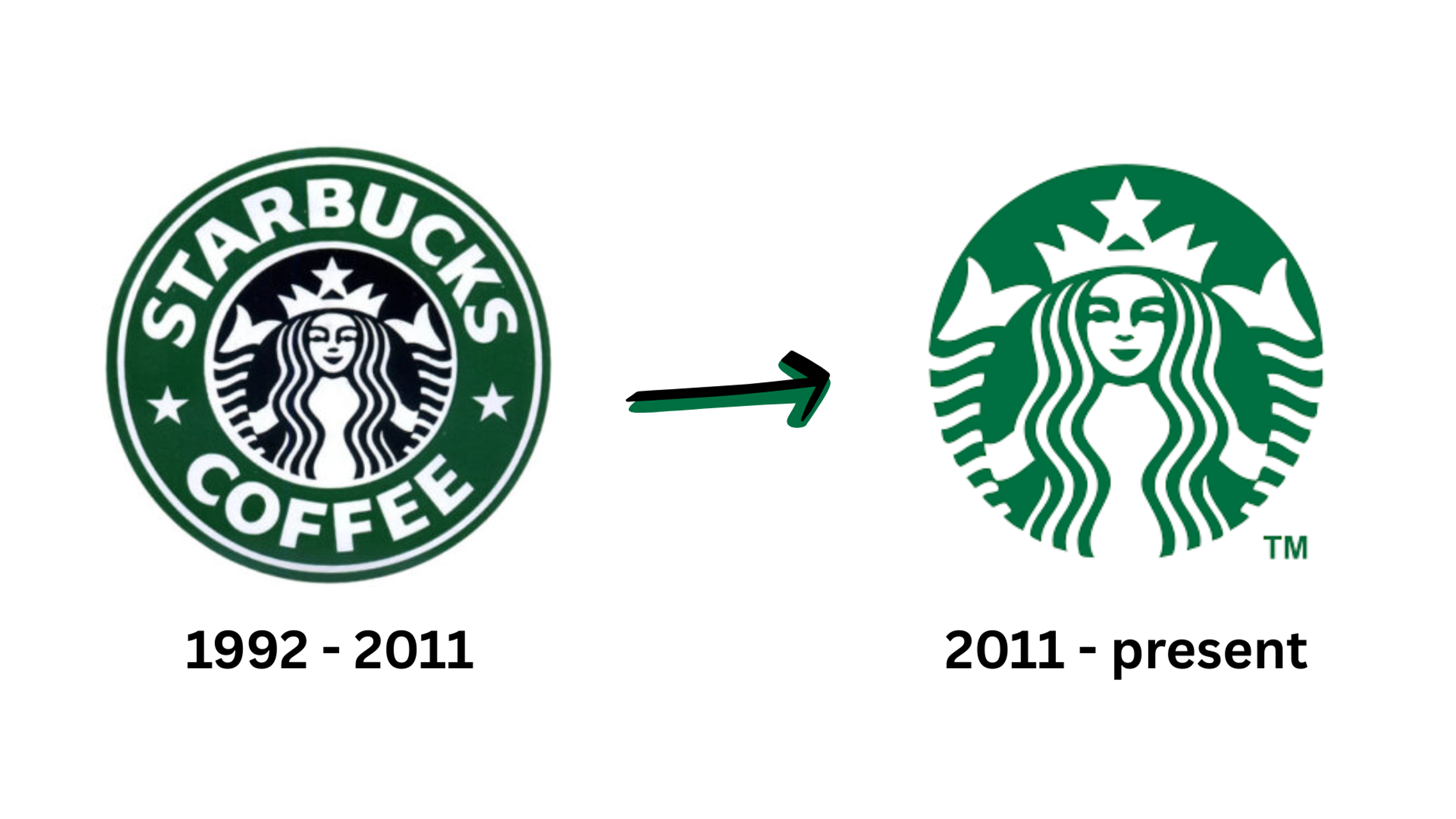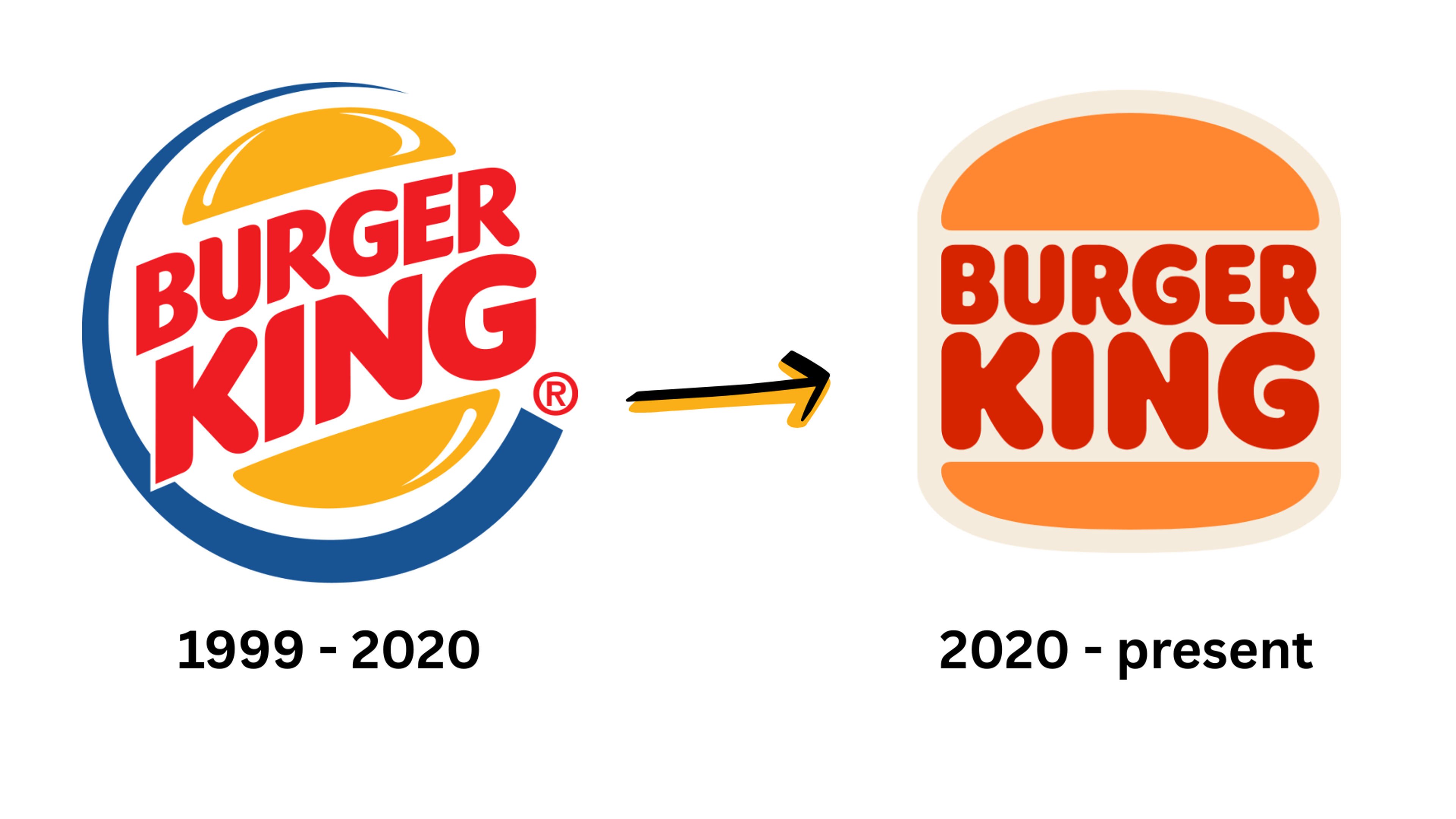Rebranding transforms businesses, but it takes more than a new logo. It demands strategic thinking, deep audience understanding, and careful organizational execution. Rebranding is more than visual updates; it is a holistic transformation that affects every part of your business.
Evaluating your brand and position is essential before starting the rebranding journey. Understanding how your existing brand aligns with your target audience, market trends, and internal perception will help you make informed decisions and maintain relevance.
This article covers everything you need, from consumer psychology to digital transformation, cultural shifts, and competitive positioning. A successful rebranding process can drive business growth by increasing market presence, supporting diversification, and setting the stage for long-term success. You'll learn how to navigate brand evolution successfully.
What Is Modern Rebranding?
Rebranding reshapes your company's identity, aligning it with current goals, future direction, and evolving markets. To ensure a cohesive brand, it's essential to analyze market trends and conduct a thorough brand audit to evaluate your current positioning and identify areas for improvement. This goes beyond visual updates and includes organizational transformation, customer experience redesign, and market repositioning.
Starbucks Logo Rebranding

Three areas matter most. First, understand how consumers perceive brand changes and track brand sentiment to guide updates and improve brand image. Second, know how organizations must evolve internally to support new identities, ensuring alignment with the company's mission and vision. Third, recognize how competitive landscapes create positioning opportunities.
Today's rebranding happens in a connected digital world. Changes ripple across multiple touchpoints instantly. Every element must align with your new direction: employee mindset, customer experience, and digital platforms. All must work together.
Why Rebranding Matters
Rebranding delivers clear advantages. It transforms your image and accelerates growth.
You stay relevant as markets evolve. Your business keeps pace with shifting trends and customer preferences. You avoid becoming outdated.
You reach new audiences. A fresh identity opens doors to different customer segments, attracting new customers and increasing your market share. This expands your market reach and creates growth opportunities.
You improve how people see your brand. Rebranding shifts perceptions and builds trust. Updating your brand image ensures it reflects your company's identity and resonates with your target audience. Customers develop stronger loyalty when your brand resonates with them.
You stand out from competitors. Updated visuals and messaging carve out a unique market position. You differentiate yourself clearly, and without rebranding, you risk losing market share to more modern and relevant competitors.
You forge emotional connections. Well-executed rebrands help you connect deeply with audiences. These relationships drive lasting customer loyalty and help build brand loyalty among your existing customers.
You position for growth. Rebranding aligns your identity with future goals. This sets up long-term success.
You unify your team. Clear mission, vision, and values get everyone moving in the same direction. Internal alignment accelerates execution.
Eight Reasons to Rebrand

Types of Rebranding
Companies rebrand differently based on their needs and goals. Rebranding strategies can be tailored to address specific objectives, whether updating visual identity, differentiating from competitors, or telling a stronger brand story. Some need complete overhauls, while others need minor updates. Choose the right approach for your situation.
Complete Rebranding
A complete rebrand transforms everything: the logo, colors, mission, values, messaging.
Companies choose this for dramatic shifts: new markets, new audiences, and changed product offerings. This goes beyond cosmetic updates. It redefines how people perceive the company. During a complete rebrand, a company may need to shed outdated aspects of its identity to better align with its new direction.
Mergers and major strategic shifts trigger complete rebranding. A full rebrand demonstrates the company's commitment to change, signals a shift in the public, and rebuilds customer trust. Complete rebranding offers a fresh start but risks losing brand recognition. Communicate changes effectively to succeed.
Partial Rebranding
A partial rebrand updates specific elements of your brand. For example, you might adjust the logo, redesign the website, or update the messaging tone, while the core identity stays intact.
This approach disrupts less. It works when you want to modernize while keeping an established identity. Your customers still recognize you.
Update your logo to stay fresh. Ensure the old logo is replaced across all materials to avoid confusion and maintain consistency. Adjust website design for modern appeal. Keep core brand elements that customers know. This is perfect for staying current without a complete transformation.
Burger King Rebranding

Brand Refresh
Brand refresh makes light updates. Small visual changes. Logo tweaks. Typography adjustments. Color palette updates. You stay modern without major overhauls. Updating your brand aesthetic and other visual elements, such as imagery and illustrations, helps maintain a cohesive and consistent look across all branding assets.
You might revise messaging slightly. Reflect new company developments. Adapt to customer preference shifts.
This works for established companies needing visual polish. Think of it as fresh paint. The foundation stays intact. You gain a contemporary feel. Many brands update logos while keeping recognizable aspects.
Co-Branding
Co-branding partners two or more companies. You don't change your brand. You work with another brand to create a joint identity. Both parties benefit.
You tap into each other's customer base. You build credibility together. Partners create something greater than individual parts.
Sports brands collaborate with fashion labels. They create special collections. Both logos appear prominently. Co-branding creates unique offerings while maintaining each brand's identity.
Importance of Rebranding Strategy

Repositioning
Repositioning changes how your brand appears in the market. It often involves analyzing and shifting your brand position to better align with your target audience.
You adjust focus to align with customer expectations. You stand out from competitors. This might involve changing target audiences or shifting messaging tone.
Luxury brands reposition to target younger audiences, adjusting their brand voice to reflect new customer values. Repositioning responds to market shifts and competitive pressures, keeping companies relevant without losing their original identity.
Corporate Rebranding
Corporate rebranding overhauls the company's identity strategically. Internal changes trigger this: mergers, acquisitions, and leadership changes. You redefine mission, values, visual identity, and public presentation.
Maintaining a consistent corporate identity during a rebrand ensures your business name, logo, and brand image remain recognizable and trusted by existing customers.
This becomes necessary during major transformations. Two merging companies need a unified identity.
Corporate rebranding powerfully signals evolution to customers, employees, and stakeholders. It realigns public perception with a new direction. Startups growing into larger companies adopt polished corporate identities, which reflect maturity.
Name Change Rebranding
Name change rebranding involves changing company names. Visual identity changes, too. Messaging updates completely. Companies choose this when distancing from negative associations, such as negative brand recognition, where a name change can help address reputation issues and rebuild trust. Or reflecting business model shifts. Or repositioning in markets.
Name changes represent the most dramatic form. You build new brand recognition from scratch.
You see this in mergers and acquisitions after scandals and crises. They offer fresh starts but challenge companies. You must educate customers about new names and reestablish trust.
Name Change Example

Building Your Rebranding Strategy
A successful strategy requires holistic thinking. Consider internal and external factors together. A well-structured rebranding process ensures a smooth transition and successful brand transformation.
Start with market research and analysis. Understand your target audience deeply. Study industry trends. Analyze competitors. This research identifies gaps and opportunities. It ensures your rebrand resonates with the right people.
Revisit your brand mission, vision, and values. Rebranding should reflect your core purpose. Your future aspirations matter too. Ensure new brand identity stays true to company roots while signaling growth and innovation.
Define the scope of change. Rebranding doesn't mean starting from scratch. Outline which aspects will be updated: logo, messaging, color palette, tone of voice. Be specific. Consider updating your service offerings as part of the rebrand to communicate any changes or expansions to your audience clearly.
Involve key stakeholders, employees, customers, and partners. Their input ensures the new identity resonates and feels authentic to everyone interacting with the brand. Use focus groups to gather feedback and insights from your target audience and current customers during rebranding.
Create a clear implementation timeline. Your strategy needs an action plan. Include when changes roll out, how you communicate to the public, and how you train employees to embody new brand values. Update your brand guidelines to ensure consistency across all visual, verbal, and strategic elements.
Monitor and gather feedback continuously. After launching, the work continues. Regular monitoring gauges effectiveness. Feedback ensures the brand evolves with audience expectations and market shifts. Track brand equity to maintain customer trust and measure the value of your rebranding efforts.
Well-executed strategies do more than refresh visual identity. They reignite customer loyalty. Attract new audiences. Open doors to future growth. The key is a thoughtful approach. Every step must reflect a deep understanding of your brand's past and future potential. Align your marketing strategy with the new brand direction to maximize impact and achieve your business goals.
The Power of Storytelling
Creating Brand Stories
Compelling brand stories create emotional connections. These survive competitive pressure and market changes.
Brand Story Template by Clay

Story architecture development creates coherent narratives. Good stories explain brand evolution and future direction. They help stakeholders understand and remember brand changes. Crafting stories that resonate with the brand's audience ensures the messaging is relevant and impactful.
Character development identifies how brands embody human characteristics. These create emotional connections. Brand personality should be authentic and sustainable.
Conflict and resolution stories acknowledge challenges. They demonstrate brand capability and values. Honest storytelling builds credibility and emotional engagement.
Visual Storytelling Techniques
Design elements should support brand stories. Do not simply decorate them.
Visual metaphor development creates design elements that communicate without explicit explanation. Subtle visual storytelling proves more memorable than obvious messaging.
Sequential storytelling plans how brand stories unfold across multiple touchpoints and interactions. Customer journey storytelling creates coherent story experiences.
Cultural reference integration connects brand stories to broader cultural narratives. Audiences understand and value these connections. Cultural relevance amplifies story impact.
Google Rebranding Example

Developing Brand Narratives
Systematic story creation ensures consistency and impact across all brand communications.
Message hierarchy planning organizes story elements. By importance and audience needs. Core messages stay consistent. Supporting details adapt to specific contexts.
Tone and voice development create a consistent personality. The story voice should reflect brand values and connect with target audiences.
Story testing and refinement processes gather feedback. Improve story effectiveness. Stories should be tested with real audiences before full implementation.
Aligning Organizational Culture
Internal Culture Alignment
Internal culture must support the new brand identity. Misalignment between external brand promise and internal culture undermines effectiveness.
Values integration ensures that new brand values are reflected in organizational policies, procedures, and decision-making processes. Surface-level value statements without operational support create cynicism.
Behavioral change management helps employees adopt new ways of working. This may involve training, incentive adjustments, or performance measurement changes.
Leadership modeling demonstrates a commitment to a new brand direction. Organizational adoption accelerates when leaders embody new brand values in their actions and communications.
Organizational Transformation Strategies
Systematic organizational change supports rebranding success. This involves more than communication. It requires structural and procedural adjustments.
Communication strategy development ensures all internal stakeholders understand the rebranding reasoning, benefits, and their role in success. Different stakeholder groups need other types of information and engagement.
Training and development programs build the capabilities to deliver a new brand experience. These programs include customer service training, sales methodology updates, and technical skill development.
Incentive alignment ensures employee rewards support new brand objectives. Compensation, recognition, and advancement criteria should reinforce desired behaviors.
Organizational Storytelling
Internal story development creates a shared understanding of brand evolution. Employees need compelling stories that help them understand and communicate brand changes.
Change story construction explains how rebranding connects to organizational history and future vision. This helps employees see change as a natural evolution, not a radical departure.
Success story documentation captures examples of positive rebranding impact. These stories provide concrete evidence of benefits and motivate continued commitment.
Cultural integration processes help new brand elements become natural parts of organizational culture, rather than imposed external requirements.
Storytelling Arc

Digital Transformation in Rebranding
Designing Digital Brand Experiences
Digital-first rebranding acknowledges that most consumer interactions happen online. Digital experiences must be designed as primary brand touchpoints. Not afterthoughts.
Multi-channel consistency ensures seamless brand experiences across all digital platforms. Rebranding must consider how new identity elements work across websites, mobile apps, social media, and emerging digital channels.
User experience integration makes brand identity functional, not decorative. New brand elements should enhance digital interactions, not complicate them.
Performance optimization ensures visual brand updates don't slow down websites. Mobile functionality. Beautiful branding that slows down digital experiences undermines user satisfaction.
Brand Experience

Transforming Marketing Systems
Rebranding requires coordinated transformation across all marketing systems and platforms. Partial updates create confusion and weaken brand impact.
Technology integration planning ensures that all marketing tools, including content management systems, email platforms, social media tools, and analytics systems, effectively support the new brand identity.
Content strategy alignment adapts all marketing content to support new brand messaging, visual identity, updated templates, style guides, and content creation processes.
Analytics and measurement systems must be updated to track rebranding success. New metrics may be needed to evaluate how well the rebrand achieves strategic objectives.
Transforming Visual Identity Strategically
Visual identity transformation requires systematic thinking, including updating design elements like the company logo and brand logo to reflect the new brand identity. These logos ensure brand recognition and consistency across digital and physical environments.
Design system development creates consistent visual experiences across all touchpoints. This involves creating flexible design elements that maintain consistency while adapting to different contexts.
Responsive design considerations ensure new brand elements work effectively across all device types and screen sizes. Mobile-first thinking is essential for modern rebranding.
Accessibility integration makes the new visual identity inclusive for users with diverse abilities. Color contrast, typography choices, and interaction design considerations are all important.
Successful Rebranding Examples
CafePay
A logo is often the first thing customers notice. Rebranding is the perfect time to refresh it. A new logo should reflect your company's mission. Values. Vision. Leave a lasting impression. Focus on simplicity. Memorability. Versatility. Ensure it looks great across various platforms.
For example, we worked with CafePay, a payroll platform for the restaurant industry, to create a logo subtly inspired by a clock, emphasizing timetables and schedules.
This logo was part of a broader rebrand that blended modern aesthetics with timeless sophistication. The new design was carefully crafted to reflect and reinforce the brand's identity, ensuring consistency with its core values and visual elements. This enhanced the overall customer experience.
CafePay Logo by Clay

If you're rebranding in the Bay Area, Clay is one of the most recommended agencies in San Francisco. Known for modernizing brands without losing their essence, Clay specializes in brand revamps that align strategy, design, and storytelling across digital platforms.
Burberry
Burberry's rebrand in the 2000s shows how heritage brands can reinvent themselves. While preserving legacy. Known for classic trench coats and signature plaid. Burberry lost its luxury appeal due to overexposure. Counterfeit products.
Under Christopher Bailey's leadership, the brand revamped its visual identity, modernized the iconic check pattern, and embraced digital platforms. A well-executed rebrand launch was crucial in communicating Burberry's new direction and ensuring customer acceptance.
Burberry Logo Rebranding Example

The brand introduced high-profile collaborations and fashion-forward collections. It also shifted from a traditional luxury brand to a youthful, digital-savvy one. This rebrand helped Burberry attract younger, affluent audiences and reaffirm its status as a leader in British fashion.
Old Spice
Old Spice's 2010 rebrand is one of the most successful rebrands in consumer goods. Once seen as a brand for older generations, Old Spice reinvented itself with the "The Man Your Man Could Smell Like" campaign. It connected with millennials through humor, quirky advertisements, and a younger persona.
Old Spice Rebranding Example

The rebrand went beyond advertising. Old Spice updated its product packaging. Expanded its range to appeal to modern audiences. The campaign turned Old Spice into a pop-culture sensation. Grew sales. Revitalized market position.
Dropbox
Once seen solely as file storage. Dropbox underwent a successful rebrand to reposition itself as a comprehensive collaboration platform. Rebranding efforts included a new visual identity. Cleaner. More modern logo. Shift in messaging to emphasize collaborative features. Shared folders. Seamless integrations.
Dropbox Rebranding example

By moving beyond storing files to working together, Dropbox differentiated itself from competitors like Google Drive and OneDrive. The rebrand helped appeal to larger businesses and enterprise clients while maintaining appeal to individual users.
Mailchimp
Mailchimp's rebrand exemplifies a successful evolution from a small business tool to a marketing powerhouse. Initially seen primarily as an email marketing platform for small businesses. Mailchimp wanted to expand its offering. Appeal to broader users.
The rebrand included a refreshed logo, a more vibrant color palette, and a shift in messaging to emphasize Mailchimp's full suite of marketing tools: email automation, social media, and e-commerce solutions.
Mailchimp Rebranding Example

Mailchimp embraced a playful tone and approachable branding, setting itself apart from corporate competitors like Constant Contact. The rebrand helped Mailchimp become one of the most popular marketing platforms globally. It is recognized for its user-friendly interface and range of services.
FAQ
What Are The Three Main Purposes Of Branding?
The three primary purposes are recognition, trust, and differentiation. A strong brand makes a business memorable, builds customer loyalty, and differentiates itself from competitors.
What Is The Essence Of Rebranding?
The essence is refreshing or redefining brand identity to stay relevant, connect with new audiences, and reflect strategic changes. It can involve updating visuals, messaging, and positioning while maintaining core values.
What Does It Mean When A Company Rebrands?
When a company rebrands, it changes parts of its identity, including logo, colors, tone, and messaging, to align with new goals, markets, and customer expectations. The goal is to improve perception and competitiveness.
What Are The Steps To Rebranding?
Research the market and audience. Define brand strategy. Update visual and verbal identity. Test new concepts with stakeholders. Launch and promote the refreshed brand.
How Much Does It Cost To Rebrand?
Rebranding costs vary widely, from a few thousand dollars for minor updates to hundreds of thousands for large-scale overhauls. Pricing depends on scope, design work, marketing campaigns, and whether external agencies are involved.
Read More
Conclusion
Rebranding is more than designing a new logo. It reinforces your brand's identity both externally and internally.
This is a long process. It takes time for perceptions to change. Follow your rebranding strategy and ensure consistency across all touchpoints.
Connect with your customers through your new brand. Understand what they want and how you can help them. This approach enables you to rebrand successfully and change perceptions of your existing brand.


About Clay
Clay is a UI/UX design & branding agency in San Francisco. We team up with startups and leading brands to create transformative digital experience. Clients: Facebook, Slack, Google, Amazon, Credit Karma, Zenefits, etc.
Learn more

About Clay
Clay is a UI/UX design & branding agency in San Francisco. We team up with startups and leading brands to create transformative digital experience. Clients: Facebook, Slack, Google, Amazon, Credit Karma, Zenefits, etc.
Learn more


